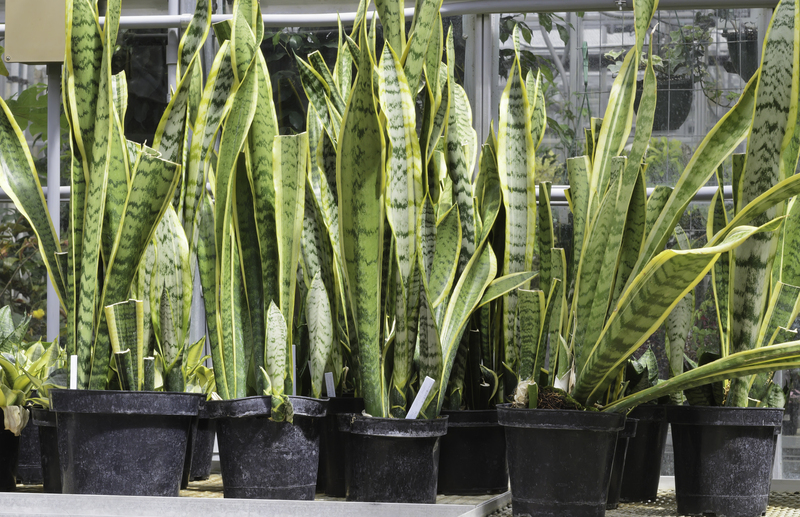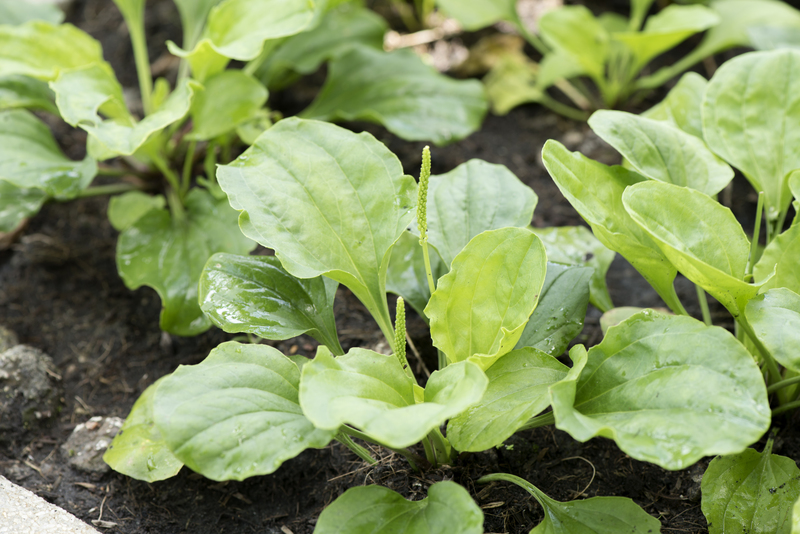A sustainable journey into container gardening
Posted on 21/08/2025
A Sustainable Journey into Container Gardening
Container gardening offers a creative and eco-friendly way to grow your own produce, flowers, and herbs in limited spaces. As more people gravitate toward sustainable living, embarking on a sustainable journey into container gardening allows urban gardeners, families, and communities to reconnect with nature while minimizing their ecological footprint. Whether you are a novice or a seasoned gardener, adopting sustainable container gardening practices can transform your space and impact the environment positively.
Why Choose Sustainable Container Gardening?
Container gardening, at its core, is the practice of growing plants in containers instead of in the ground. This gardening style is especially beneficial for those with limited outdoor spaces, such as balconies, patios, and rooftops. However, to embark upon a sustainable journey into container gardening, it's essential to embrace eco-friendly principles that go beyond aesthetics and productivity. Below are the key reasons to make your container garden more sustainable:
- Reduces carbon footprint by cultivating food locally and shrinking food miles.
- Conserves water through targeted watering and efficient irrigation systems.
- Utilizes recycled and upcycled materials for containers, minimizing landfill waste.
- Supports biodiversity by attracting pollinators and other beneficial insects.
- Improves air quality and enhances your living environment.

Planning Your Sustainable Container Garden
Embarking on a sustainable container gardening journey begins with strategic planning. The right preparation helps you create a thriving garden with a low ecological footprint. Consider these crucial steps:
1. Analyze Your Space
Take note of where you want to grow your plants. Assess sunlight exposure, wind patterns, accessibility, and available space. Even window sills, steps, rooftops, and unused corners can become productive gardens with thoughtful container selection and placement.
2. Select Sustainable Containers
Your choice of containers sets the tone for your eco-friendly garden. A sustainable journey into container gardening encourages the use of:
- Recycled containers: Repurpose old buckets, broken pots, wooden crates, or even tin cans. Ensure they have drainage holes.
- Biodegradable pots: Choose containers made from coir, rice hulls, bamboo, or paper pulp which naturally break down over time.
- Secondhand finds: Thrift stores and community swaps often yield unique containers at low environmental cost.
- Avoid single-use plastics: Opt for alternatives that promote long-term use or upcycling.
3. Choose the Right Soil and Amendments
Standard potting mixes often contain peat, which is not environmentally friendly due to its extraction process. For your sustainable container gardening adventure, opt for:
- Peat-free potting mixes
- Homemade compost
- Coconut coir and leaf mold
- Worm castings
Mix in organic fertilizers such as bone meal, kelp meal, or comfrey tea to enrich the soil and avoid synthetic chemical use.
Eco-Friendly Plant Selection for Container Gardens
A major aspect of a sustainable journey into container gardening is picking plants that will thrive in containers while supporting the local ecosystem. Consider the following:
1. Native and Pollinator-Attracting Plants
- Choose native plant species adapted to your climate, requiring less water and maintenance.
- Select blooming varieties that attract bees, butterflies, and other pollinators--lavender, marigold, zinnia, and sunflowers are great options.
2. Edible Plants for Container Gardening
- Grow herbs such as basil, mint, parsley, chives, and thyme. These thrive in small pots and can be harvested regularly.
- Try vegetables like cherry tomatoes, lettuce, radishes, spinach, and peppers.
- Root vegetables--carrots, beets, or potatoes--work well in deeper containers.
3. Drought-Resistant and Companion Plants
- Favor succulents and drought-tolerant flowers to minimize water usage.
- Implement companion planting by growing mutually beneficial plant pairings (e.g., basil with tomatoes) in shared containers.
Water Conservation in Container Gardens
Mindful water use is central to a sustainable journey into container gardening. Containers can dry out quickly, so efficient watering practices are vital:
- Collect rainwater in barrels or buckets for garden use.
- Install self-watering systems or set up drip irrigation to reduce water waste.
- Add a layer of organic mulch (straw, wood chips, or dried leaves) to retain moisture and suppress weeds.
- Group containers by water needs to streamline your watering routine.
- Water in the early morning or late afternoon to minimize evaporation.
DIY Composting and Organic Fertilization
A sustainable journey into container gardening thrives on closed-loop systems. Creating your own compost or vermicompost (using worms) offers a steady supply of nutrient-rich amendments for your plants:
- Convert kitchen scraps, coffee grounds, eggshells, and yard trimmings into compost.
- Use vermicomposting bins indoors or outdoors for small spaces.
- Apply compost tea as a gentle liquid fertilizer.
By recycling organic waste, you foster healthy soil life and keep unnecessary materials out of landfills.
Pest Management the Sustainable Way
Creating a thriving container garden inevitably attracts some pests. Rather than relying on chemical pesticides, try these eco-friendly integrated pest management (IPM) strategies:
- Introduce beneficial insects like ladybugs and lacewings to control aphids and mites.
- Use natural deterrents like neem oil, garlic spray, or soap solutions.
- Practice regular garden hygiene: remove dead leaves and debris promptly.
- Grow trap crops (e.g., nasturtiums for aphids) to draw pests away from main crops.
- Rotate plant families in your containers each season to prevent pest build-up.
Upcycling and Recycling: Creative Container Ideas
The heart of a sustainable journey into container gardening beats stronger with a commitment to reduce, reuse, and repurpose. Imaginative upcycling keeps costs low and diverts waste:
- Old boots or shoes as whimsical planters for small flowers or succulents.
- Repurposed kitchenware--colanders, teapots, mugs--make unique herb containers.
- Convert wooden pallets into vertical gardens for leafy greens.
- Use broken terracotta pot shards as drainage material at the bottom of larger containers.
- Plastic bottles and barrels cut and adapted for hanging or stackable gardens.
These creative solutions give discarded items a second life and embed artistry into your gardening approach.
Maximizing Urban Spaces with Sustainable Container Gardening
Urban environments can pose space constraints, but the adaptability of container gardening unlocks many possibilities:
- Vertical gardens utilize walls, trellises, and railings to grow upwards.
- Tiered plant stands and shelves maximize sunlight and create visual appeal.
- Window boxes and hanging baskets add greenery to small ledges and balconies.
- Rooftop container gardens offer ideal growing conditions with ample sunlight and airflow.
Thoughtful design can even help mitigate urban heat islands and improve microclimates where you live.
Community, Education, and Sharing Resources
The ripple effect of a sustainable journey into container gardening extends beyond individual spaces. When container gardening becomes a communal effort, it fosters education, food security, and stronger neighborhoods:
- Share seeds, cuttings, and surplus harvests with neighbors, friends, or local nonprofits.
- Start a community container garden on shared patios or rooftops.
- Host garden workshops to teach others about upcycling containers, composting, and organic pest control.
Collaborative gardening encourages everyone to participate in the movement toward a more sustainable, resilient future.

Conclusion: Embark on Your Eco-Friendly Container Gardening Adventure
A sustainable journey into container gardening is more than a trend--it's a conscious lifestyle shift. By choosing smart materials, conserving resources, nurturing living soil, and harvesting your own food, you contribute to a greener planet and healthier community.
- Plan your eco-friendly container garden with the environment in mind.
- Upcycle, recycle, and imagine creative container solutions.
- Grow native, edible, and pollinator-friendly plants.
- Save water with efficient and mindful irrigation practices.
- Minimize waste by composting and sharing resources.
Whether you're gardening on a windowsill or transforming an entire rooftop, these sustainable container gardening techniques empower you to make a significant impact. Embrace the joy of growing, connect with nature in your daily life, and be part of a movement reshaping the urban landscape--one container at a time.
Frequently Asked Questions: Sustainable Container Gardening
What are the best eco-friendly containers for gardening?
Biodegradable pots (made from rice hulls, coir, or paper), recycled metal tubs, secondhand ceramic pots, and upcycled wooden crates are ideal. Avoid new plastic containers if possible.
How can I make my container garden more water-efficient?
Use self-watering systems, collect rainwater, mulch each container, and select drought-tolerant plant varieties. Water pots early in the day to reduce evaporation.
Can I compost indoors for my container garden?
Yes! Vermicomposting with a small worm bin is perfect for apartments. You'll be able to convert food scraps into excellent natural fertilizer.
Is container gardening really sustainable?
When you focus on responsible materials, organic soil amendments, mindful water use, and shared community resources, container gardening can be a highly sustainable option--even in the heart of a city.
What are the most productive edible plants for containers?
Herbs (basil, parsley, mint), salad greens, cherry tomatoes, peppers, radishes, and small root vegetables thrive in containers and offer excellent yields for small spaces.
Start your sustainable journey into container gardening today, and discover how easy it is to grow a greener, healthier future for all.

